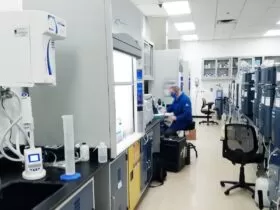In today’s fast-paced digital age, remote work has emerged as a popular alternative to traditional office settings. The comforts of home, the elimination of daily commutes, and the promise of a flexible schedule all make remote work appealing. Yet, like all good things, there’s a flip side to this coin. The blurred lines between personal and professional life, prolonged isolation, and the challenges of self-management can brew a silent storm known as burnout. This article sheds light on the lurking dangers of burnout among remote workers and offers holistic wellness strategies designed to help long-term remote employees maintain their mental, emotional, and physical well-being, ensuring that the promise of remote work doesn’t become a peril.
Understanding Burnout: Defining the Silent Productivity Killer
Burnout isn’t merely about feeling tired after a long day. It’s a state of chronic physical and emotional exhaustion, often accompanied by feelings of cynicism and detachment from one’s job. For remote workers, this can manifest in several ways: constant fatigue despite adequate rest, decreasing passion for tasks once enjoyed, or even physical symptoms like headaches or digestive issues. Burnout is particularly insidious because it creeps in slowly, making it hard to notice until it’s become severe. Recognising the early signs and understanding its triggers are paramount for prevention.
Physical Health Matters: Setting Up Ergonomic Workspaces
While the idea of working from a cosy bed or a plush couch might seem appealing, the reality can be far from it. Physical discomfort, arising from poor posture or unsuitable workspaces, can quickly lead to chronic pain issues, contributing majorly to burnout. An ergonomic workspace, which prioritises posture, comfort, and movement, becomes essential. Start with an adjustable chair, ensuring your feet rest flat on the ground. Your computer screen should be at eye level, reducing neck strain. Regularly taking breaks to stretch, investing in wrist rests, and ensuring adequate lighting can all contribute to a comfortable and productive workspace. By emphasising physical well-being, remote workers can proactively tackle one of the primary precursors to burnout.
The Mental Load: Recognising and Reducing Cognitive Overload

Operating in a remote work setting often translates into juggling numerous tasks, managing multiple communication channels, and maintaining a self-imposed discipline—all of which can lead to cognitive overload. This mental load, if not addressed, can wreak havoc on productivity and personal well-being. Recognising signs such as forgetfulness, difficulty concentrating, or a decreased ability to make decisions is vital. Combatting cognitive overload involves delegating tasks when possible, setting clear priorities, and most importantly, allowing oneself to take breaks. A simple change in scenery or even a short walk can reenergise the brain. It’s also crucial to establish a shutdown routine, signalling the brain that the workday has ended, thus providing necessary mental respite.
Streamlining Workflows with Essential Tech: The Role of Efficient Online Tools
In our digitally-driven remote work landscape, using the right online tools isn’t just a convenience—it’s a necessity. One common hurdle many remote employees face is handling large documents, especially when they need to be shared swiftly. Enter the PDF compressor, a tool that reduces file sizes while maintaining quality. Platforms like Smallpdf have made it seamless for remote workers to compress, convert, and handle documents without the need for bulky software installations. Opting to use Smallpdf can be a game-changer, reducing stress and streamlining workflows. In essence, selecting tools that are intuitive, efficient, and tailored to specific tasks can alleviate potential stressors, contributing significantly to avoiding burnout.
Mindful Meditation: The Power of Pausing and Reflecting
In the constant hustle of deadlines and meetings, it’s easy to get caught up in the whirlwind and forget the essence of being present. Mindful meditation serves as an antidote to this whirlwind. By dedicating just a few minutes daily to mindful meditation, remote workers can centre themselves, achieving clarity and calmness. The practice involves focusing on the present moment, acknowledging thoughts without judgment, and employing deep, rhythmic breathing. Not only does this reduce anxiety and stress, but it also enhances focus and creativity. For remote workers especially, it’s a gentle reminder that amidst all tasks and screens, taking a moment to connect with oneself can be the most transformative strategy for mental well-being.
Social Connections: Maintaining Bonds in a Virtual World

As we’ve transitioned into a remote work environment, the once-simple act of sharing a cuppa or a quick chat by the water cooler has become a rarity. Yet, the significance of maintaining social connections remains undiminished. Loneliness and isolation can be as detrimental to mental well-being as an excessive workload. Embracing virtual communication tools, from instant messaging to video calls, ensures continuity in building and nurturing relationships. Virtual team-building exercises, occasional casual video hangouts, and even simple messages of appreciation can go a long way. Furthermore, remember to maintain a balance—don’t just stick to work-related topics; share personal stories, hobbies, and even the occasional meme. Creating virtual camaraderie mimics the warmth of physical offices, supporting both team cohesion and individual well-being.
Diversifying Tasks: Breaking the Monotony of Daily Routines
Routine can be comforting, but an unchanging rhythm, especially in a remote work setting, can lead to a sense of stagnation and monotony. To invigorate your workdays, consider mixing up your tasks. Start by identifying a variety of activities that range in complexity and creativity. Allocate different tasks for different days or even different parts of the day. Tackling a challenging task in the morning followed by a more relaxed activity can make the day feel more dynamic. Moreover, set aside time for skill-building or exploratory projects outside your usual remit. This not only diversifies your day but also promotes continuous learning and growth.
Time Management: Finding a Healthy Balance between Work and Rest
When home becomes the office, drawing a clear line between ‘work time’ and ‘personal time’ can be challenging. This blurred boundary often results in either overworking or feeling perpetually on-call. Effective time management goes beyond just scheduling tasks—it’s about demarcating clear boundaries. Utilise digital tools like time trackers or calendar apps to structure your day. Prioritise tasks, allocate set time slots for breaks, and most crucially, establish a clear end to your workday. Furthermore, consider adopting techniques like the Pomodoro Technique, which advocates for focused work sessions followed by short breaks. By establishing these routines and being disciplined about start and end times, you’ll not only enhance productivity but also ensure adequate rest and relaxation.




















![Top 5 Nintendo DS Emulators for Windows PC 115 Top 5 Nintendo DS Emulators for Windows [2022]]](https://technicalistechnical.com/wp-content/uploads/2022/09/nobh7rq7zn8-280x210.webp)








